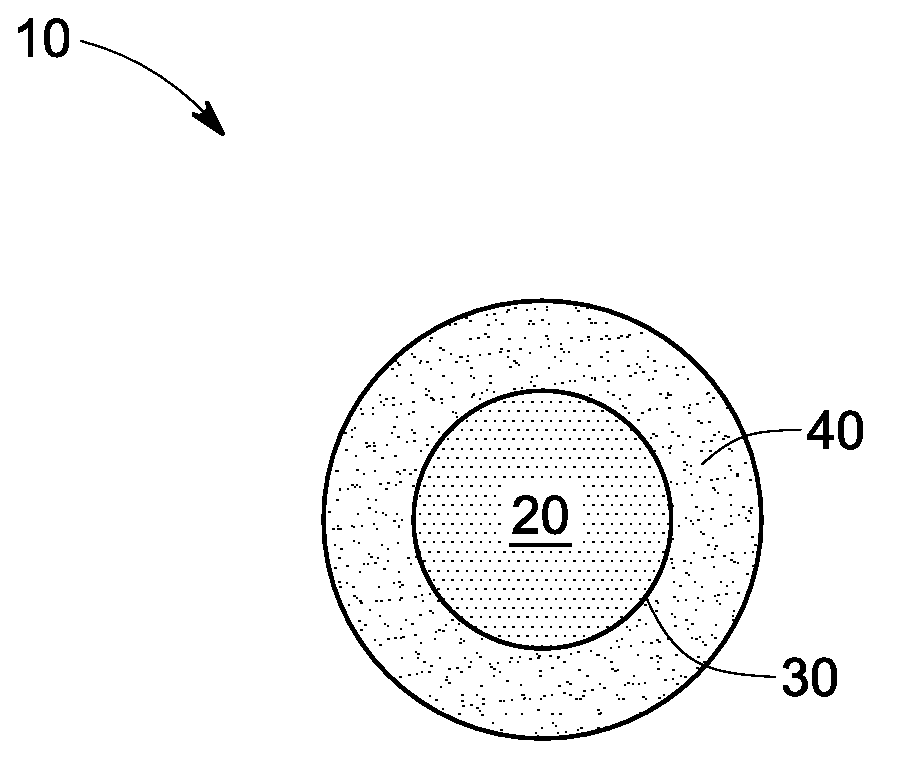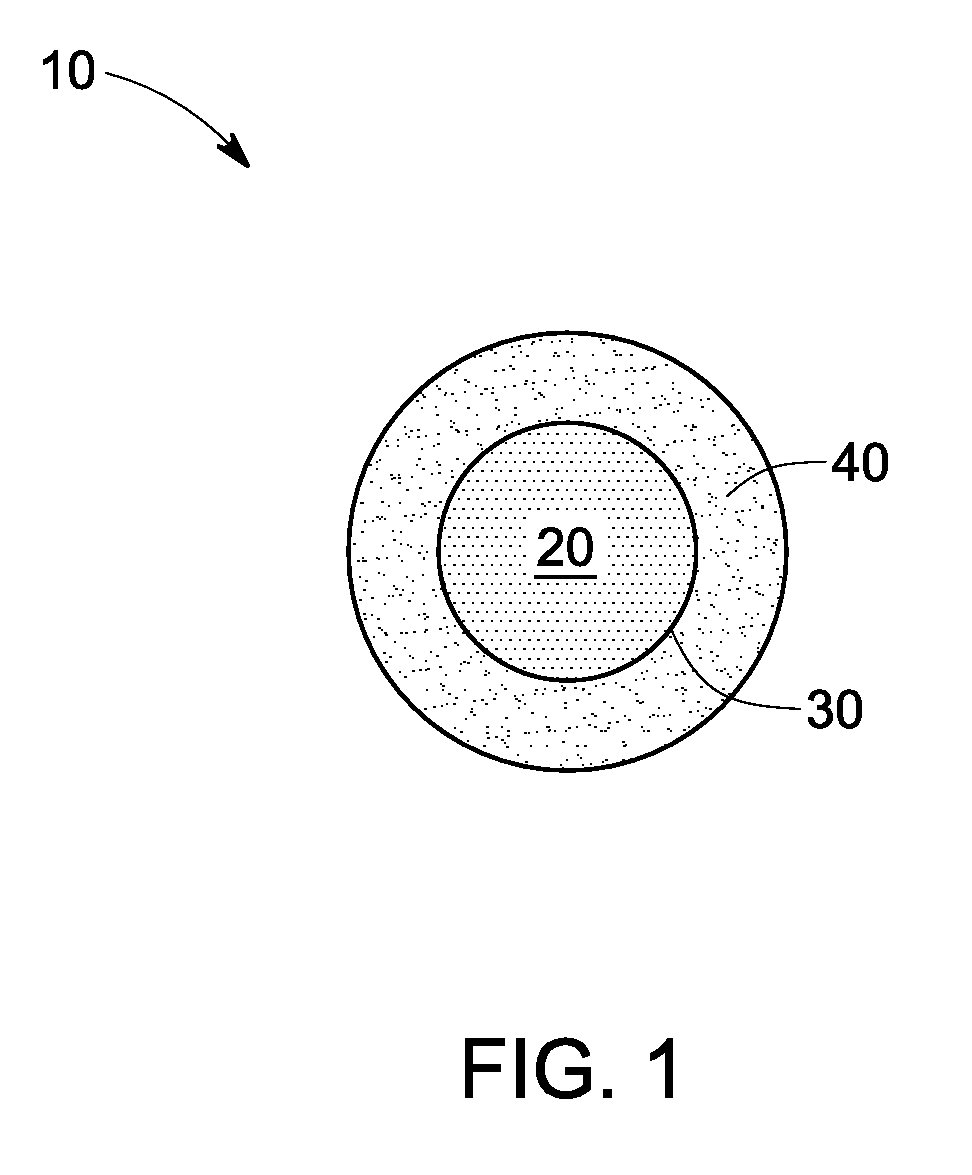Nanoparticle contrast agents for diagnostic imaging
a technology of contrast agents and nanoparticles, applied in the field of nanoparticle-based contrast agents, can solve the problems of small molecule contrast agents, short blood circulation time, and lower sensitivity, and achieve the effects of improving imaging characteristics, reducing cost, and improving performan
- Summary
- Abstract
- Description
- Claims
- Application Information
AI Technical Summary
Benefits of technology
Problems solved by technology
Method used
Image
Examples
examples
[0066]Practice of the invention will be still more fully understood from the following examples, which are presented herein for illustration only and should not be construed as limiting the invention in any way.
[0067]The abbreviations used in the examples section are expanded as follows: “mg”: milligrams; “mL”: milliliters; “mg / mL”: milligrams per milliliter; “mmol”: millimoles; “μL” and μLs: microliters “LC”: Liquid Chromatography; “DLS”: Dynamic Light Scattering; “DI”: Deionized water, “ICP”: Inductively Coupled Plasma.
[0068]Unless otherwise noted, all reagent-grade chemicals were used as received, and Millipore water was used in the preparation of all aqueous solutions.
Synthesis of Tantalum Oxide-Based Nanoparticles
Step-1
Synthesis of N,N-dimethyl-3-sulfo-N-(3-(trimethoxysilyl)propyl)propan-1-aminium
[0069]Toluene (anhydrous, 250 mL), N,N-dimethylaminotrimethoxysilane (25 g, 121 mmol) and 1,3-propane sultone (13.4 g, 110 mmol) were added to a 500 mL round bottom flask containing a ...
PUM
| Property | Measurement | Unit |
|---|---|---|
| particle size | aaaaa | aaaaa |
| particle size | aaaaa | aaaaa |
| particle size | aaaaa | aaaaa |
Abstract
Description
Claims
Application Information
 Login to View More
Login to View More - R&D
- Intellectual Property
- Life Sciences
- Materials
- Tech Scout
- Unparalleled Data Quality
- Higher Quality Content
- 60% Fewer Hallucinations
Browse by: Latest US Patents, China's latest patents, Technical Efficacy Thesaurus, Application Domain, Technology Topic, Popular Technical Reports.
© 2025 PatSnap. All rights reserved.Legal|Privacy policy|Modern Slavery Act Transparency Statement|Sitemap|About US| Contact US: help@patsnap.com



